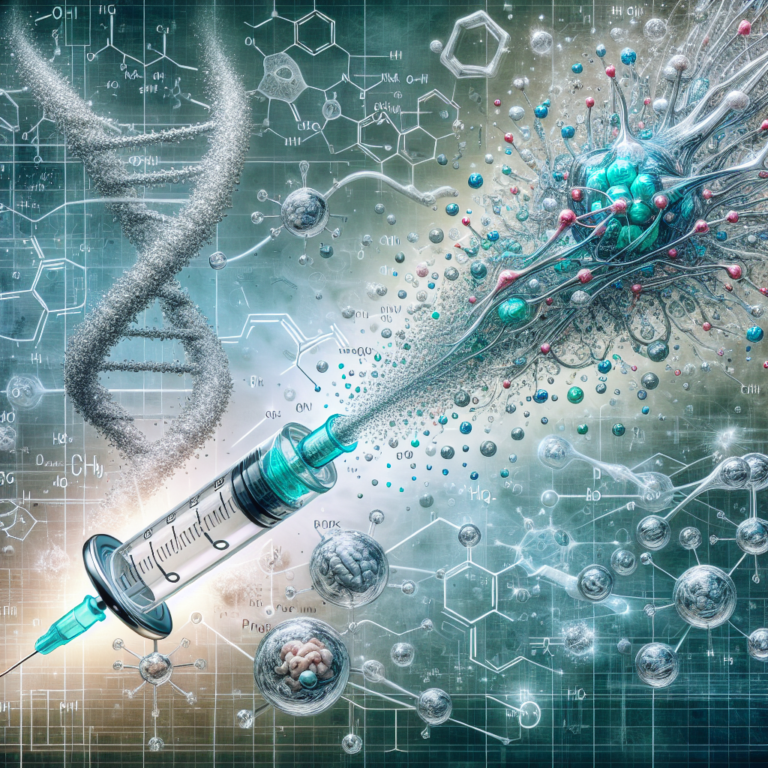Under the Needle: Exploring the Biochemistry of Botox and Its Effects
Botox, famously known as a cosmetic wonder, promises youthful skin and reduced wrinkles with just a few strategic injections. Yet, beneath its glamorous surface lies a complex biochemistry that plays a crucial role in its function and effects on the human body. This article delves into the science behind Botox, examining both its biochemical mechanisms and its physiological effects.
Understanding Botox
Botox is the trade name for a purified form of botulinum toxin type A, produced by the bacterium Clostridium botulinum. Initially discovered in spoiled food, this neurotoxin is one of the most potent natural substances known. Despite its origins in food poisoning, researchers uncovered its potential therapeutic applications, leading to its approval for various medical and cosmetic uses.
The Biochemical Mechanism
At the heart of Botox’s effectiveness is its ability to inhibit neurotransmitter release. When injected into a muscle, Botox acts on the neuromuscular junction—a critical point where nerve cells communicate with muscle fibers. The active component of Botox, botulinum toxin, specifically targets the protein SNAP-25, which is essential for the release of acetylcholine, a neurotransmitter that signals muscles to contract.
-
Mechanism of Action:
-
Binding to Nerve Endings:
After injection, the botulinum toxin binds to the presynaptic nerve terminals. The heavy chain of the toxin facilitates its entry into the nerve cell, where it undergoes proteolytic cleavage by specific enzymes. - Blocking Neurotransmitter Release:
Once inside the neuron, the light chain of the toxin disrupts the function of SNAP-25, preventing the fusion of synaptic vesicles containing acetylcholine with the cell membrane. As a result, the release of acetylcholine is inhibited, leading to temporary paralysis of the targeted muscle.
-
- Duration of Effects:
The effects of Botox typically begin within 24 to 72 hours post-injection and can last for three to six months. As new nerve endings form and the affected muscle regains its ability to contract, patients often require follow-up treatments to maintain the desired appearance and muscle function.
Therapeutic and Cosmetic Applications
While Botox is widely recognized for its cosmetic applications in temporarily reducing facial wrinkles, it also has numerous medical uses, including:
-
Chronic Migraine Treatment: Patients suffering from chronic migraines have found relief through Botox, as the toxin can inhibit pain pathways by blocking neurotransmitter release.
-
Hyperhidrosis: Individuals with excessive sweating can benefit from Botox injections, which block the signals to sweat glands, providing significant relief.
- Muscle Spasticity: Conditions such as cerebral palsy and multiple sclerosis often result in muscle stiffness or spasms. Botox helps reduce muscle tone by disrupting the signaling pathways that lead to muscle contraction.
Side Effects and Considerations
Like any medical procedure, Botox is not without risks. Common side effects include localized pain, swelling, and bruising at the injection site. More severe reactions can occur, such as allergic reactions or unintended muscle paralysis, emphasizing the importance of selecting qualified professionals for treatment.
Moreover, repeated use of Botox may lead to the formation of antibodies, potentially reducing its effectiveness over time. This highlights the delicate balance required in dosage and frequency of treatment to achieve optimal results.
The Bottom Line
Botox transcends being merely a beauty treatment; it epitomizes the intersection of biology and medicine. With its intricate biochemical mechanisms and wide-ranging applications, it represents a fascinating case study on how a deadly toxin can be transformed into a therapeutic ally. As our understanding of botulinum toxin continues to evolve, so too will its applications in both medicine and aesthetics, paving the way for new innovations in treatment and care. Whether for cosmetic enhancements or medical therapies, Botox indeed serves as a testament to the power of science and biochemistry.


